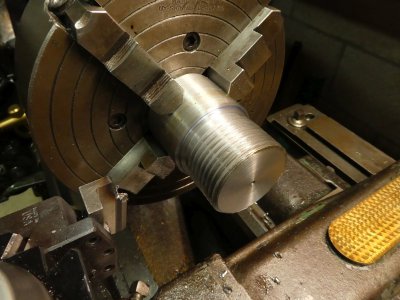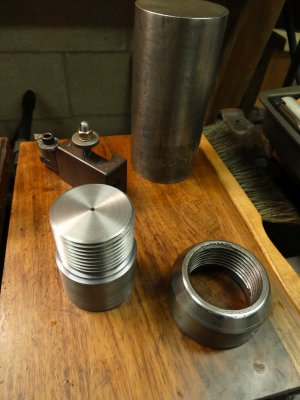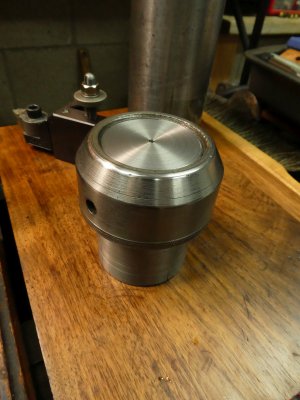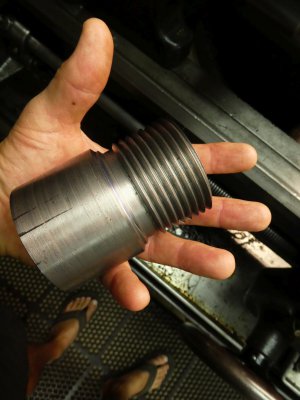Just finished up some big, to me, threads to use as a go/no-go on my next project. 2 3/8-6 to match the spindle thread on my lathe. I plan on making a new spindle collar for use with collets.
Until I am better, could be never, at using the machinists handbook to understand all the ways to measure threads I feel much better having a test thread in hand to check for fit.
I didn't respect the extra forces involved in cutting this large of a thread and ended up breaking the Aloris insert! Nice 52 dollar mistake. Sort of lucky that I am on a belt driven lathe too! Got a little slip in the second and a half reaction to shutting her down!
Turned out real nice though!

Next to the beat up spindle collar

Test Fit


Until I am better, could be never, at using the machinists handbook to understand all the ways to measure threads I feel much better having a test thread in hand to check for fit.
I didn't respect the extra forces involved in cutting this large of a thread and ended up breaking the Aloris insert! Nice 52 dollar mistake. Sort of lucky that I am on a belt driven lathe too! Got a little slip in the second and a half reaction to shutting her down!
Turned out real nice though!

Next to the beat up spindle collar

Test Fit



